Research aims to improve visual appearance and nutritional status
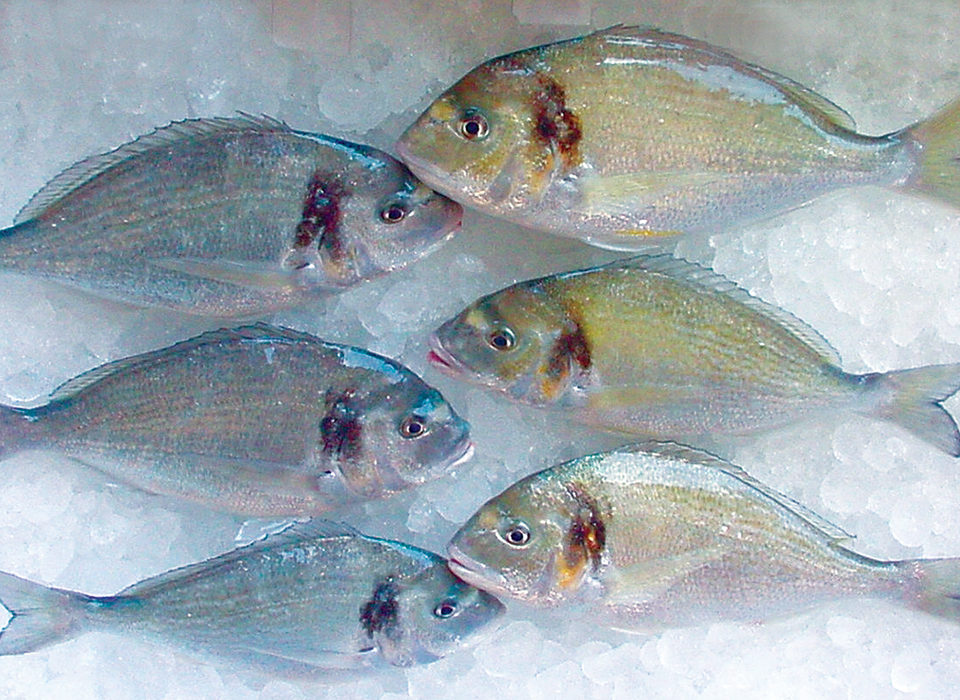
With the high pressure on prices for sea bream – Sparus aurata, a high-value and important aquaculture species in the Mediterranean – aquafarmers want to differentiate their product from the competition. Quality in sea bream is defined by the main criteria of appearance, slaughter quality, freshness, cooking quality and nutritional value.
The appearance of sea bream is judged by the presence of a pigmented operculum, distinct abdominal yellow line, bright yellow arc between the eyes, and golden shine over the dorsal area. Nutritional value mainly focuses on the omega-3 content of the consumed fillets.
Experimental diets
With financial support from the Commission of the European Community Quality of Life and Management of Living Resources program, the authors recently carried out research to improve the visual appearance and nutritional status of sea bream by applying finishing diets.
Three grow-out diets were formulated, including a standard control diet (HIGH FM) with high amounts of fish oil and fishmeal, and two diets in which part of the fishmeal and fish oil was replaced by vegetable protein and fat sources in different amounts (MED FM+ and LOW FM) (Table 1). In the MED FM+ diet, the nutritional concentrate Fish Essense was included to compensate for nutrient losses caused by the fishmeal replacement.
Ceulemans, Composition of experimental diets, Table 1
| Diet | HIGH FM | MED FM+ | LOW FM | FIN |
|---|
Diet | HIGH FM | MED FM+ | LOW FM | FIN |
|---|---|---|---|---|
| CP/CF | 46/18 | 46/18 | 46/18 | 48/17 |
| % Protein from fishmeal | 65 | 35 | 25 | 64 |
| % Fat from fishmeal/oil | 85 | 33 | 31 | 85 |
A fourth diet (FIN) was formulated with a finishing premix that included nutrients and ingredients to optimize the nutritional status and enhance the visual appearance of the fish. All diets were formulated with standard raw materials and produced on a twin-screw cooking extruder.
Experimental setup
A first experiment evaluated the effects of the finishing diet on the growth and nutritional profile of the end product. Experimental fish of 48 grams initial weight were randomly assigned to 300-liter tanks placed in a partial recirculation system with borehole water at an average 22 degrees-C. Water quality parameters were monitored daily and kept within accepted limits for the species. Fish were fed with automatic belt feeders. Uneaten feed was retrieved, with feed intake corrected accordingly.
During the first 126 days, the fish were fed the different three grow-out diets. After this acclimatization period, fish of the MED FM+ and LOW FM groups were subdivided into a first group that continued on the acclimatization diet and a second group switched to a finishing diet (MED FM+->FIN and LOW FM->FIN). This finishing period lasted 58 days, after which fish were weighed and sampled for fillet and liver composition.
A second trial was set up under the same experimental conditions as the first, but in larger 600-l tanks. After a short acclimatization period in the system, 200-gram experimental animals with the same feeding history were divided into groups fed the HIGH FM diet or FIN diets. After 105 days, the fish were weighed and sampled for analysis of the integument.
Finishing diet improves growth, nutritional status
Throughout the first trial, there were no statistically significant differences in growth and feed conversion between fish fed the HIGH FM and MED FM+ diets, although they performed significantly better than the LOW FM animals. The group fed the LOW FM diet showed a 14.5 percent lower daily growth rate and 34 percent higher feed-conversion ratio (FCR) than the HIGH FM fish during the acclimation period (Fig. 1).
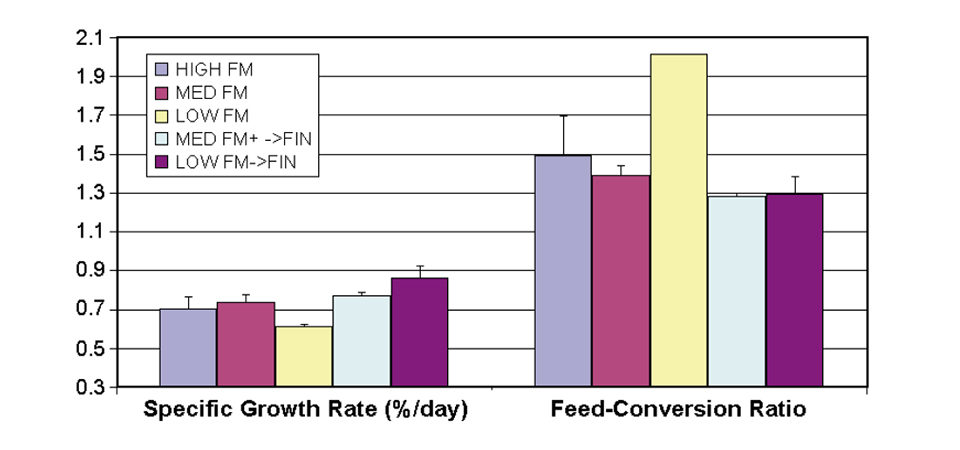
When these fish were switched to a finishing diet, growth and FCR improved drastically. The fish acclimatized on the LOW FM diet showed a major compensatory growth response, ending up at 264 gram final weight – very close to the 271-gram weight achieved on the HIGH FM diet.
Fillets of fish fed the MED FM+ and LOW FM diets, where fish oil was largely replaced by vegetable oils, showed high levels of omega-6 polyunsaturated fatty acids (PUFAs) and reduced levels of omega-3 highly unsaturated fatty acids (HUFAs). These fatty acid profiles are not recommended for consumers. The finishing feeds, containing high levels of marine protein and fats, restored the omega-3 HUFA content in the fillets and washed out the omega-6 HUFAs to some extent.
No clear effects were observed on the proximate composition of the fillets when switched to the finishing diet, but a positive effect on fat content of the liver was detected.
Skin pigmentation
In the second trial, the focus was skin pigmentation. Visual observations, which showed greatly improved skin pigmentation, were confirmed by chromometer measurements (Fig. 2). A chromometer is a device that measures color intensity.
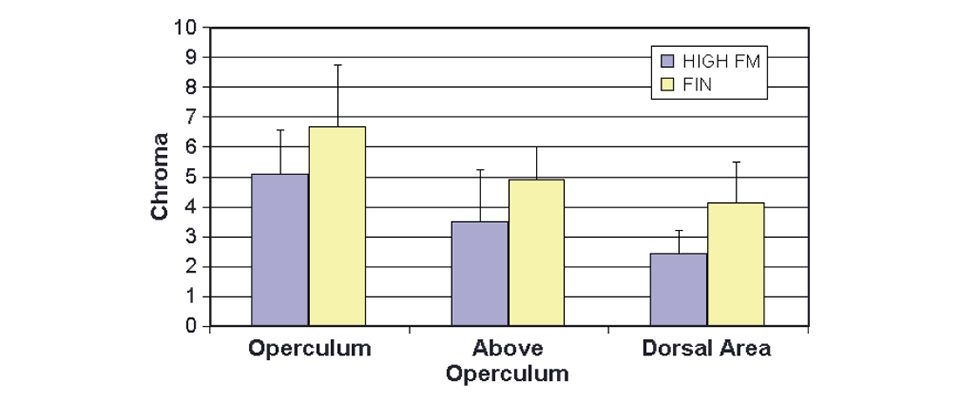
Chemical analysis of the skin also showed improved carotenoid content. The fish fed the finishing diet had 4.4 mg total carotenoids per kilogram compared to the control diet value of 1.9 milligrams per kilograms. No significant differences in growth or feed utilization were observed in the trial, although the finishing diet performed slightly better.
(Editor’s Note: This article was originally published in the April 2005 print edition of the Global Aquaculture Advocate.)
Now that you've reached the end of the article ...
… please consider supporting GSA’s mission to advance responsible seafood practices through education, advocacy and third-party assurances. The Advocate aims to document the evolution of responsible seafood practices and share the expansive knowledge of our vast network of contributors.
By becoming a Global Seafood Alliance member, you’re ensuring that all of the pre-competitive work we do through member benefits, resources and events can continue. Individual membership costs just $50 a year.
Not a GSA member? Join us.
Authors
-
-
Peter Coutteau, Ph.D.
Inve Aquaculture Nutrition
Hoogveld 93, 9200
Dendermonde, Belgium -
Rocio Robles
Caditec Testing, S.L..
Cadiz, Spain -
Gabriel Mourente
Department of Biology
CASEM University of Cádiz
Puerto Real-Cádiz, Spain -
Carlos Cardoso
Department of Technological Innovation and Upgrading of Fish Products
Fisheries and Sea Research Institute – INIAP/IPIMAR – Lisboa, Portugal -
Amparo Goncalves
Department of Technological Innovation and Upgrading of Fish Products
Fisheries and Sea Research Institute – INIAP/IPIMAR – Lisboa, Portugal -
Maria L. Nunes
Department of Technological Innovation and Upgrading of Fish Products
Fisheries and Sea Research Institute – INIAP/IPIMAR – Lisboa, Portugal
Tagged With
Related Posts
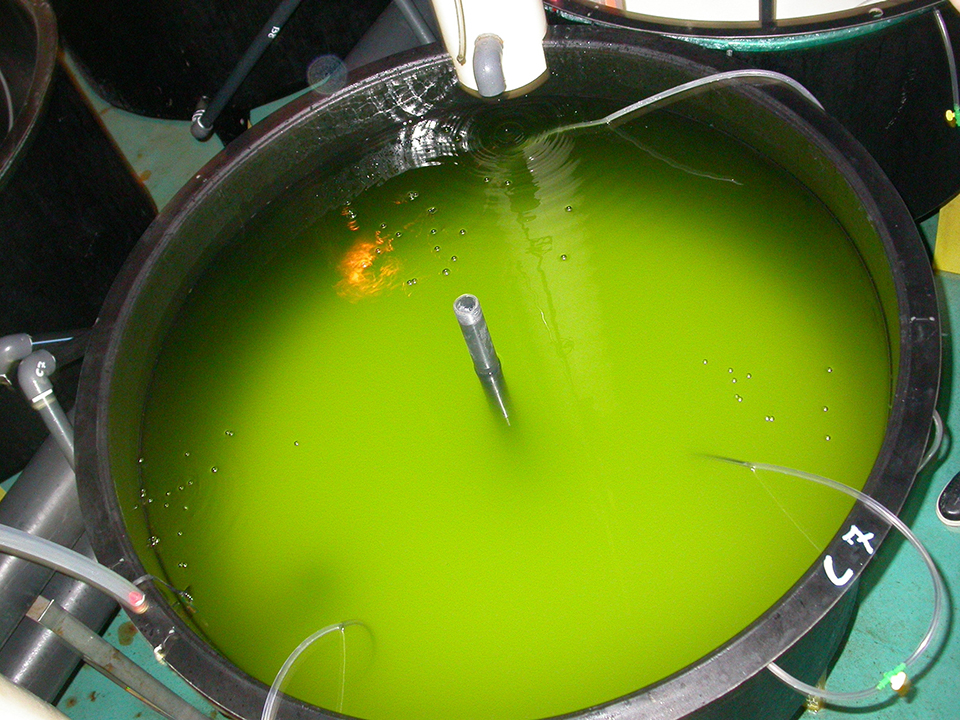
Health & Welfare
Algae alternatives serve in larval rearing of sea bream
Sea bream fry are produced using the greenwater technique in which microalgae are added to larval-rearing tanks during the first 20 to 30 days after hatching.

Aquafeeds
A look at phospholipids in aquafeeds
Phospholipids are the major constituents of cell membranes and are vital to the normal function of every cell and organ. The inclusion of phospholipids in aquafeeds ensures increased growth, better survival and stress resistance, and prevention of skeletal deformities of larval and juvenile stages of fish and shellfish species.
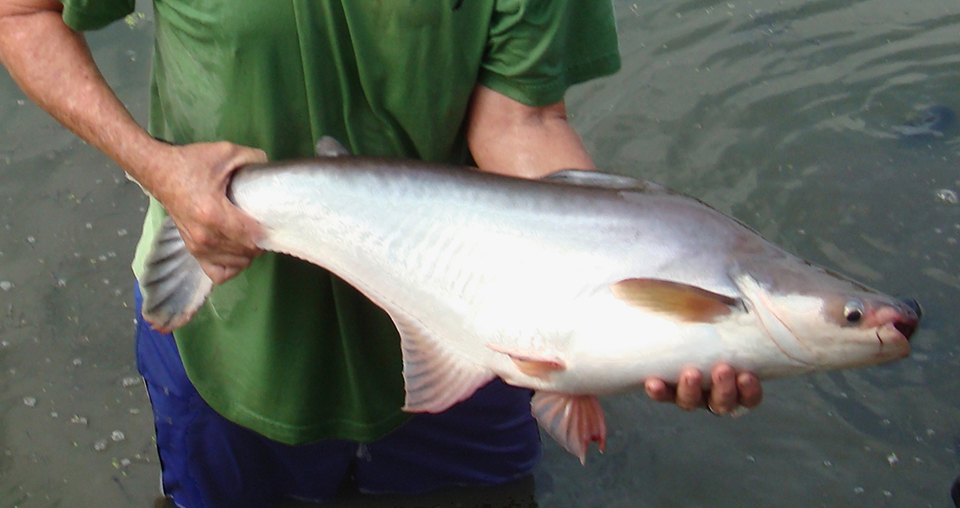
Health & Welfare
Advances in fish hatchery management
Advances in fish hatchery management – particularly in the areas of brood management and induced spawning – have helped establish aquaculture for multiple species.
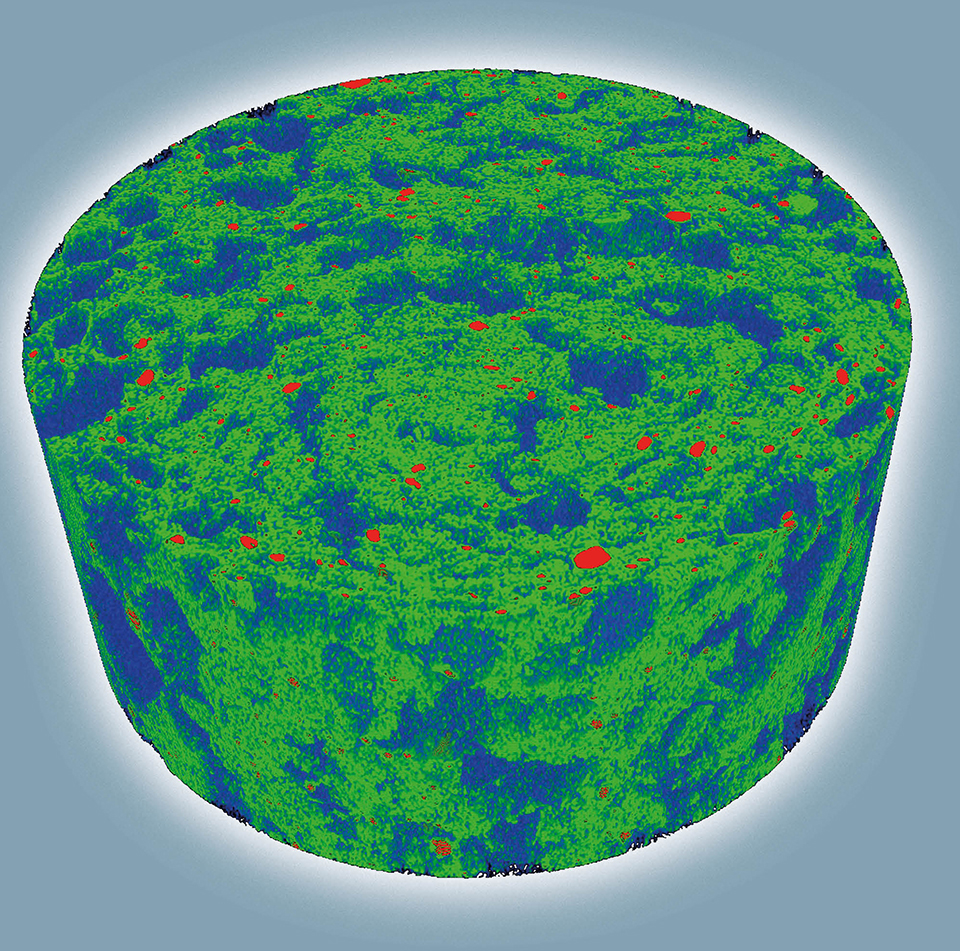
Aquafeeds
Alternative feed ingredients support continued aquaculture expansion
Identifying sources for essential macro- and micronutrients is important, as well as understanding how best to manufacture feed to required physical specifications when using these new raw materials.



